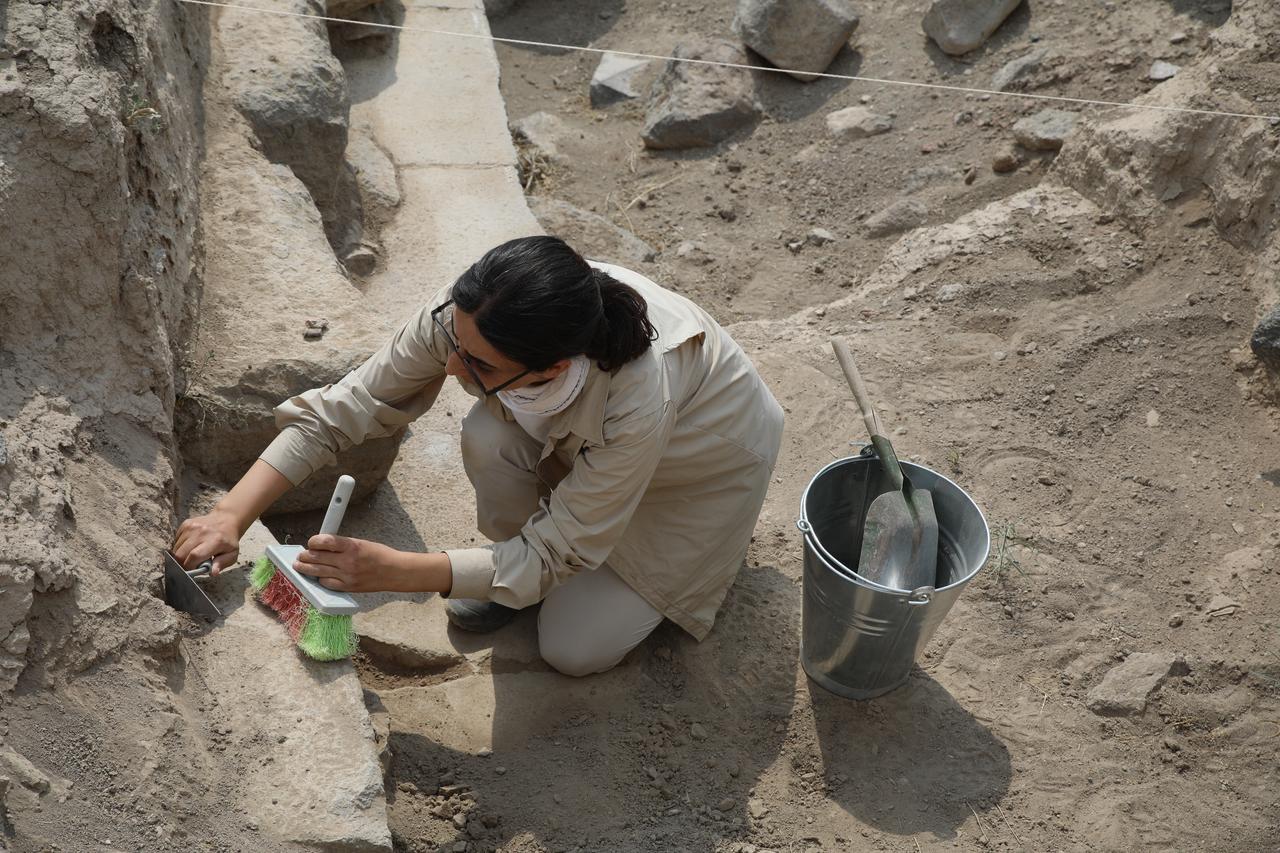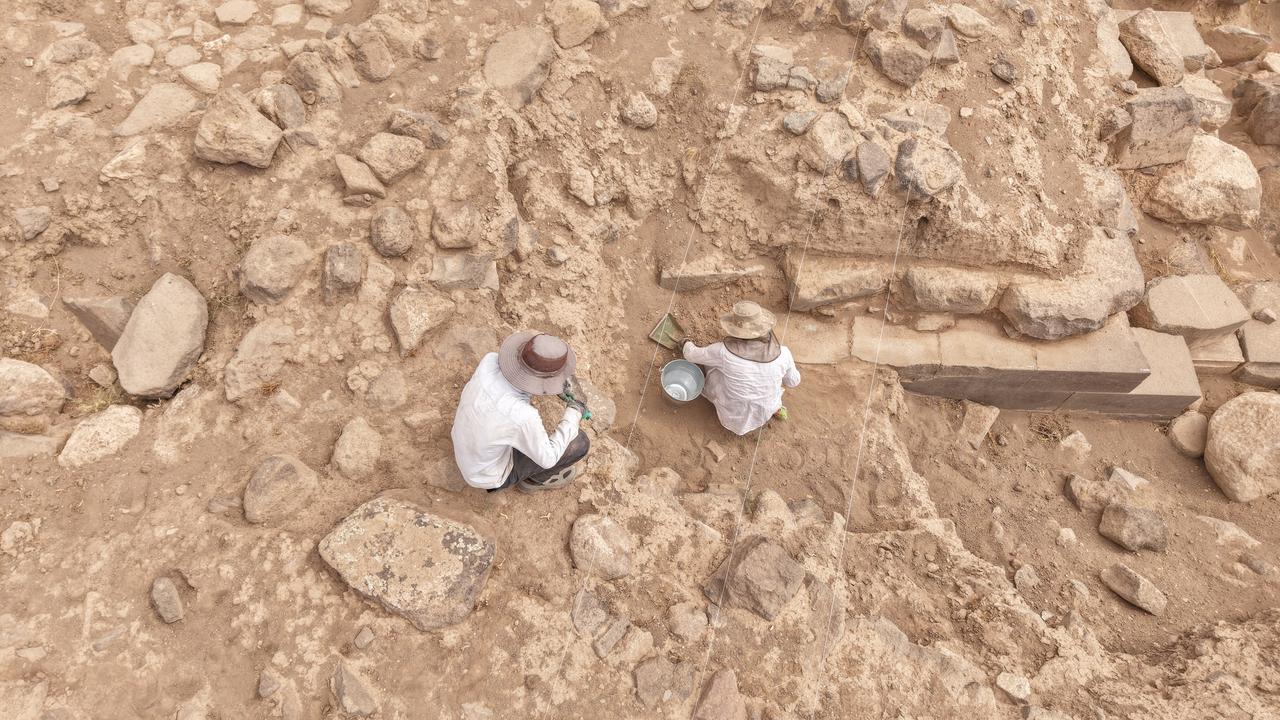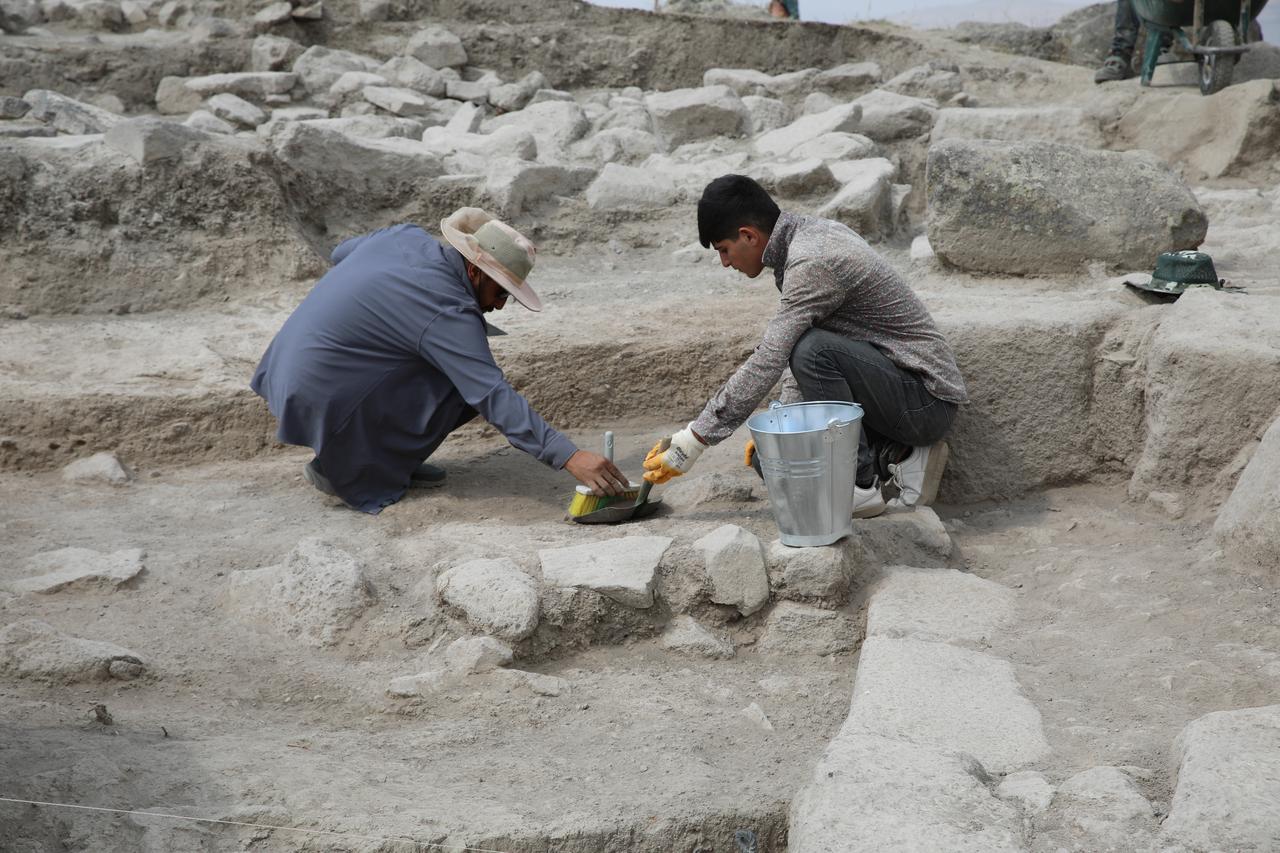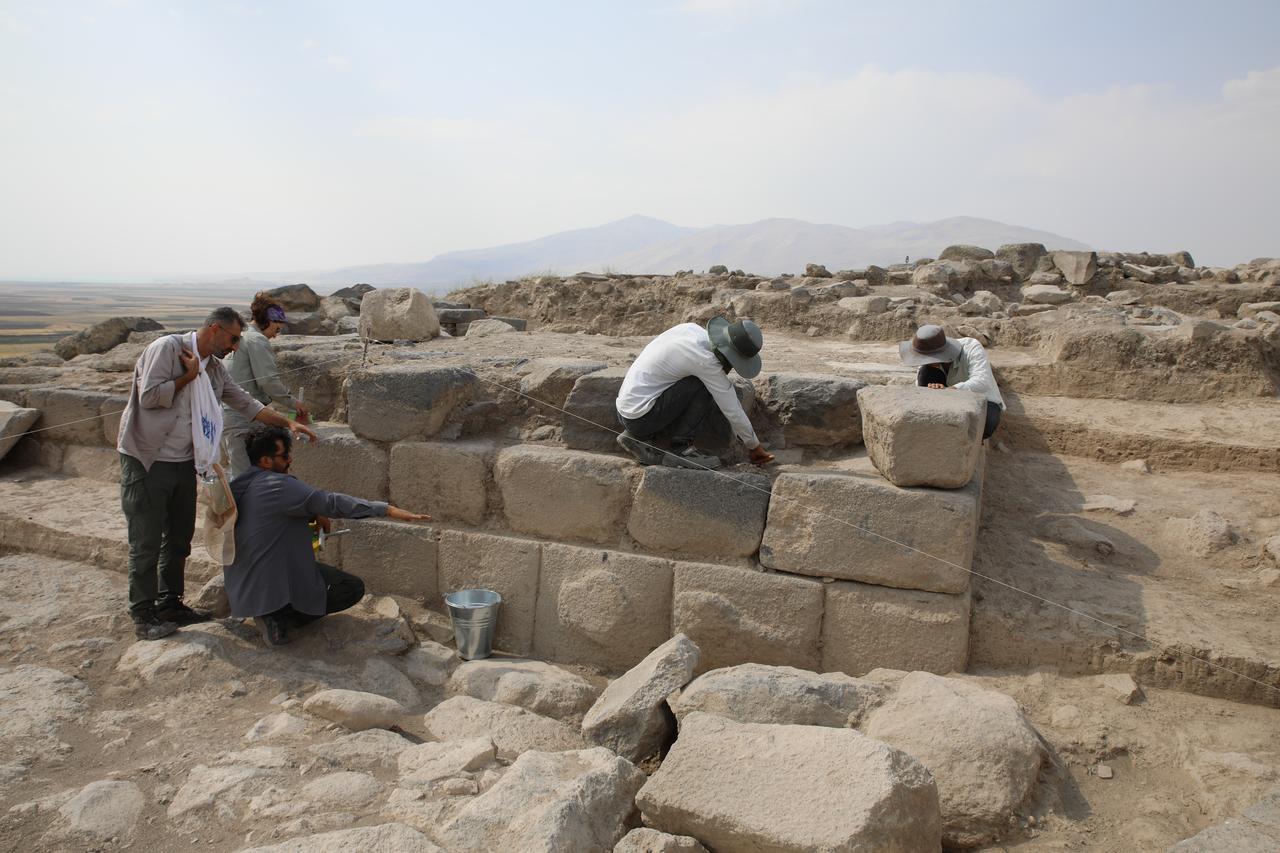
Archaeologists working in eastern Türkiye have deciphered ancient inscriptions that identify the site of Korzut Fortress as Haldi Patari, meaning “the city sacred to Haldi,” shedding new light on the significance of this Urartian stronghold.
The discovery was made during ongoing excavations in Muradiye, a district in the eastern province of Van. The site contains remains of a fortress built into the rocky terrain by King Minua of the Urartu Kingdom, which ruled the region during the Iron Age.
The excavation is led by Sabahattin Erdogan of Van Yuzuncu Yil University with the support of the Turkish Ministry of Culture and Tourism and local institutions.

The name Haldi Patari was found inscribed in cuneiform across six lines on two basalt blocks uncovered two years ago within a temple structure at the site. The translation was recently completed by a team of specialists, confirming the ancient name of the city as a tribute to Haldi, the supreme deity of the Urartian pantheon.
Erdogan noted that the presence of this specific name within the tablets was a significant breakthrough: “This name excited us. It was Korzut’s name during the Urartian era. Haldi Patari means ‘the sacred city of Haldi.’ So we have now identified the city’s ancient name.”

The excavations have also brought to light critical architectural features, including a second temple, part of a palace entrance referred to as the citadel (or sitadel), and pathways connecting civilian areas to the central complex. These findings have helped researchers better understand the layout and function of the ancient settlement.
Other discoveries at the site include arrowheads from the Urartian period, coins from the 10th century—pointing to continued habitation during the medieval period—and both glazed and unglazed ceramic fragments, offering insight into daily life across centuries.

Can Avci, an expert in ancient Near Eastern history from Istanbul University, has worked on archaeological sites across the Van region for over two decades.
He emphasized the scale and sophistication of the fortress walls at Korzut, which are constructed from basalt stones weighing between 6 and 12 tons each.
He highlighted that the Urartian builders cut these stones from local quarries and managed to erect walls measuring up to 9 meters wide, aligning them with the slope of the land—a task requiring advanced engineering and substantial manpower.
According to Avci, “The resistance of these stones to the terrain’s incline and their static positioning required great engineering knowledge and human effort.”

Avci also described the site’s architectural grandeur, saying that its monumental scale would have projected security to residents and intimidation to enemies.
He believes that the walls around the citadel feature some of the largest stones found in any Urartian urban center to date.
With the identification of Haldi Patari now confirmed, the archaeological team is preparing to move into a new phase focused on conservation. Restoration projects are planned for the temple where the inscribed tablets were found.
Erdogan emphasized that the next step will be to remove scattered debris and prepare the site for future preservation efforts.